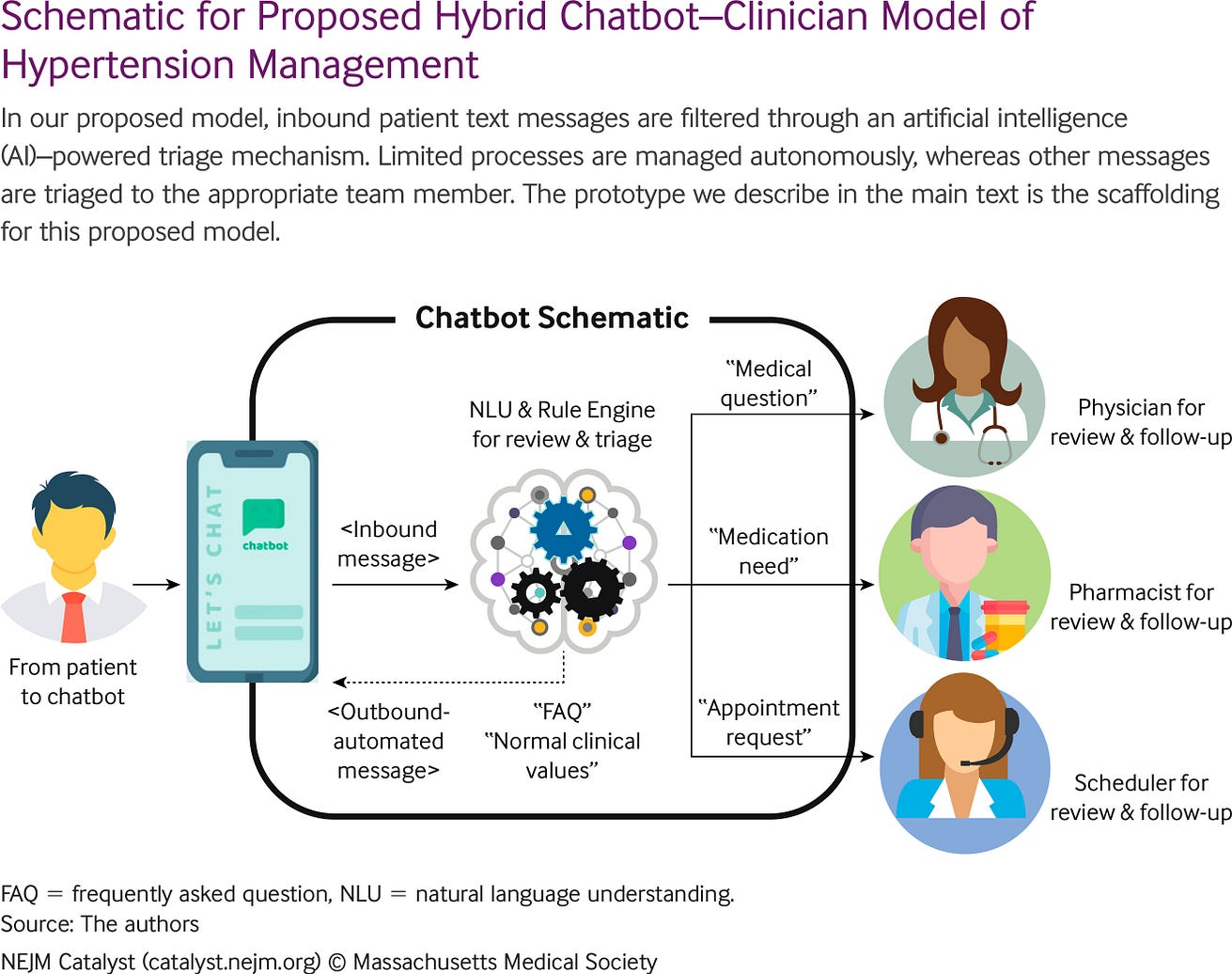Chief Researcher and Editor:
Joaquim Cardoso MSc.
the health transformation . portal
November 2, 2022
NEJM Catalyst
Natalie S. Lee, MD, MPH, MSHP, ThaiBinh Luong, PhD, Roy Rosin, MBA, David A. Asch, MD, MBA, Christianne Sevinc, MPH, Mohan Balachandran, MA, MS, Michael Josephs, Matthew H. Rusk, MD, Nicole L. McHenry, MSN, RN, Elizabeth L. Asch, et al.
Published October 19, 2022
Summary
What is the context?
- Automated chatbots offer the promise of reducing reliance on personnel while maintaining or increasing effective and comfortable customer engagement.
- But accuracy standards are higher and quality assurance more difficult in health care settings, where patients are the customers.
What is the use case?
- The University of Pennsylvania Health System implemented a prototype chatbot to reduce message burden on clinicians in a text-based remote hypertension management program.
What are the results?
- The chatbot accurately triaged 99% of patient messages (1,379 of 1,393), …
- with most messages, nearly 75% (1,073), not requiring escalation to the clinician.
What is the scope of the paper?
- The authors share both their approach for building while doing using innovation methodology and the lessons learned in developing a chatbot for clinical care.
Infographic

Originally published at https://catalyst.nejm.org








